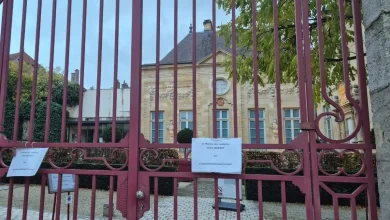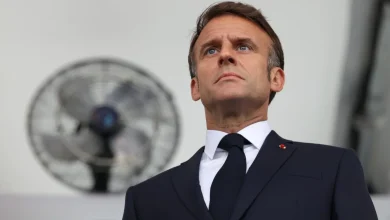Ukraine accuses Russia of destroying a dam on the Dnipro near Kherson. Authorities warn of flooding. Russia, on the other hand, blames Ukraine for damage to the dam.
Russia is said to have blown up an important dam on the Dnipro in the Cherson region of southern Ukraine. This is reported by the Ukrainian authorities. They warn residents further down the river about flooding and called on them to prepare for an evacuation. According to the Interior Ministry, residents of ten villages are affected as well as parts of the city of Cherson.
The online medium “The Kyiv Independent” published pictures of a destroyed dam and violent floods on Twitter.
Ukraine: “Another act of terrorism by Russia”
The head of the Ukrainian regional military administration in Kherson, Oleksandr Prokudin, said in a video published on Telegram that Russia had committed another act of terrorism. He warned that the water level of the Dnipro could reach a critical level in the next few hours. Ukrainian President Volodymyr Zelenskyy called an emergency meeting of the National Security Council, Council Secretary Oleksiy Danilov reported on Twitter.
Russia denies own responsibility
The Russian occupiers, on the other hand, blamed Ukrainian shelling for the damage to the Kakhovka dam. “The water has risen,” said Moscow-appointed mayor in Nowa Kakhovka, Vladimir Leontiev, according to Russian state news agencies. So far, however, there is no need to bring civilians to safety. The information provided by both sides could not initially be verified independently.
Possible effects also for Zaporizhia nuclear power plant
According to the Ukrainian Atomic Energy Agency, the destruction of the dam could also have consequences for the operation of the Zaporizhia nuclear power plant further upstream. The situation there is so far under control, said the authority. “Water from the Kachowka reservoir is necessary for the plant to receive electricity for the turbine condensers and safety systems of the nuclear power plant,” explains Energoatom. “Currently, the plant’s cooling basin is full: at 8 a.m., the water level is 16.6 meters, which is enough for the plant’s needs.”
As early as October last year, President Zelenskyj accused Russia of having mined the dam and warned against blowing up the dam: “If they do that, there will be a catastrophe,” Zelenskyj said at the time.
After attacking Ukraine, Russia also occupied the Kherson region. Last fall, the Ukrainian army then managed to liberate part of the region – including the regional capital of the same name, Cherson. However, towns south of the Dnipro remained under Russian control, including the dam town of Nowa Kakhovka.
Severe damage to the Dnieper dam after explosions
According to the Ukrainian military, Russian troops blew up a dam at a hydroelectric power station on the Dnieper River. This could have serious consequences.
The Ukrainian Task Force South announced in the morning that Russian forces had blown up the dam at the Nova Kakhovka hydroelectric power station.
This could lead to destruction around the city of Kherson and along the Dnieper River. Particularly explosive: the hydroelectric power station also supplies the Zaporizhia nuclear power station with cooling water. The nuclear power plant is under Russian control.
The military governor of the region, Olexander Prokudin, warned that the water level of the Dnieper could reach a critical level within five hours. According to him, evacuations have already begun on the Ukrainian-controlled side of the Dnieper.
The Russian occupiers blamed Ukrainian shelling for the damage to the Kakhovka dam. “The water has risen,” said the mayor appointed by Moscow in Nowa Kachowka. The Russian side also confirmed the partial destruction of the dam. The damage was caused by “Ukrainian shelling”.
Located on the lower reaches of the Dnieper in the Black Sea lowlands, the Kakhovka reservoir is the last and lower tier of six reservoirs.
Ukrainian President Volodymyr Zelenskyy organized an emergency Security Council meeting in response to the incident.


 Louvre Heist Mastermind Revealed: Social Media Star and Former Guard “Doudou Cross Bitume” Arrested
Louvre Heist Mastermind Revealed: Social Media Star and Former Guard “Doudou Cross Bitume” Arrested Brigitte Macron’s identity hacked: Listed as “Jean-Michel” in France’s tax system
Brigitte Macron’s identity hacked: Listed as “Jean-Michel” in France’s tax system Second museum robbery shocks France: Gold and silver treasure stolen from Diderot Museum
Second museum robbery shocks France: Gold and silver treasure stolen from Diderot Museum Louvre jewel heist shocks France: Macron vows to find the thieves
Louvre jewel heist shocks France: Macron vows to find the thieves